The Diamond Route – Culture, Nature, and Adventure Just Beyond Tokyo
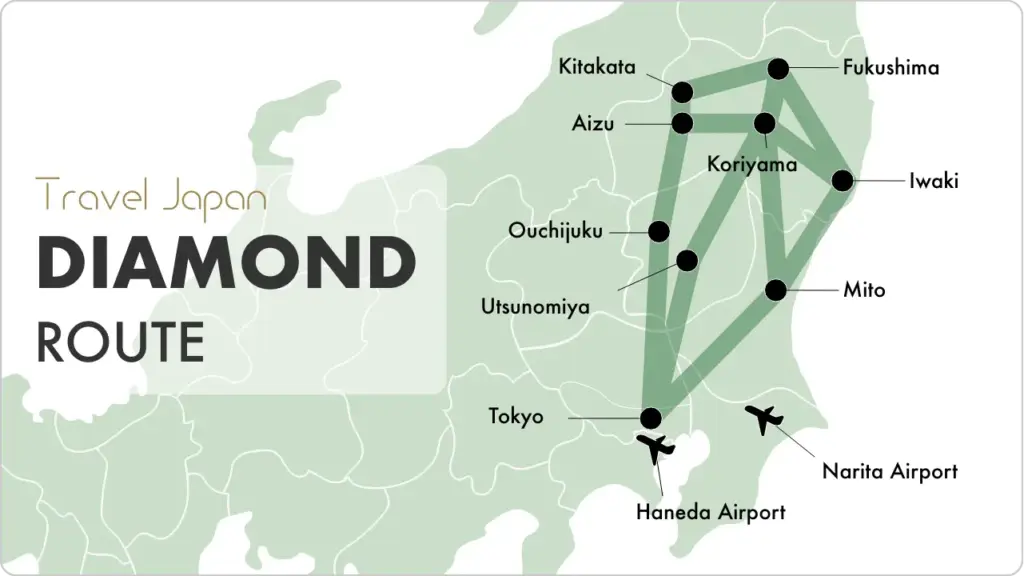
The Diamond Route is a rising star among Japan’s sightseeing paths, offering travelers a deep cultural journey through Fukushima, Tochigi, and Ibaraki prefectures—all within easy reach of Tokyo. Known for its historical sites, scenic landscapes, outdoor adventures, and authentic cultural experiences, the Diamond Route is perfect for visitors looking to explore Japan beyond the typical tourist trail.
Whether you’re interested in history, nature, wellness, or outdoor sports, the Diamond Route provides a refreshing alternative to more crowded destinations, and all without straying far from the capital.
Sample Itinerary on the Diamond Route
Day 1: Tokyo → Aizu-Wakamatsu (Fukushima)
Depart Tokyo and head north to the samurai city of Aizu-Wakamatsu. Explore Tsuruga Castle, a beautifully reconstructed fortress that offers insights into Japan’s feudal history. Visit local workshops to learn about Aizu lacquerware, a traditional craft with centuries of heritage.
Day 2: Ouchi-juku and Mt. Bandai (Fukushima)
Travel back in time at Ouchi-juku, a preserved Edo-period post town with thatched-roof houses. In the afternoon, enjoy outdoor activities around Mt. Bandai, such as hiking or winter skiing, depending on the season.
Day 3: Nikko (Tochigi)
Head to Nikko, home to the spectacular Toshogu Shrine, a UNESCO World Heritage Site dedicated to Tokugawa Ieyasu, the founder of the Tokugawa shogunate. Visit Kegon Falls, one of Japan’s most beautiful waterfalls, and relax by scenic Lake Chuzenji.
Day 4: Mito and Hitachi Seaside Park (Ibaraki)
Travel to Mito, the capital of Ibaraki Prefecture, and visit Kairakuen Garden, one of Japan’s Three Great Gardens, especially famous for its plum blossoms. Then explore Hitachi Seaside Park, known for its seasonal flower fields such as baby blue eyes in spring and kochia in autumn.
Day 5: Return to Tokyo
On your final day, stop by Ushiku Daibutsu, one of the world’s tallest Buddha statues, or enjoy a relaxing onsen stay before returning to Tokyo.
Highlights Along the Diamond Route
Aizu-Wakamatsu: A City of Samurai and Tradition
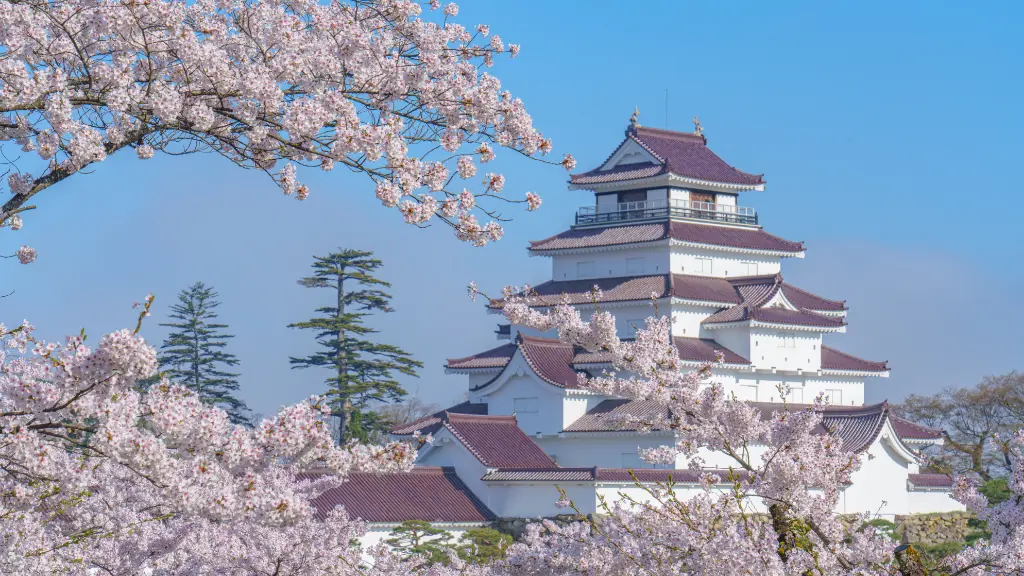
Aizu-Wakamatsu, located in western Fukushima, is known as the “Samurai City” for its deep-rooted history and preserved warrior culture. The city’s crown jewel is Tsuruga Castle, a beautifully reconstructed white-walled fortress surrounded by cherry blossoms in spring and colorful foliage in autumn. The castle’s museum offers insight into the Boshin War and the last days of the samurai.
Stroll through Nanokamachi Street, lined with traditional storehouses, local crafts, and cozy cafes. Here, visitors can experience Aizu lacquerware, a regional craft with over 400 years of history. Nearby, you can explore a preserved samurai residence, offering a glimpse into the lifestyle of Japan’s warrior class.
Aizu is also known for its excellent sake breweries, thanks to the region’s pure water and cold climate. Many breweries offer tastings and tours. In winter, the area transforms into a quiet wonderland, perfect for soaking in hot springs at traditional inns with views of snow-covered mountains.
Nikko: Spiritual Grandeur in the Mountains
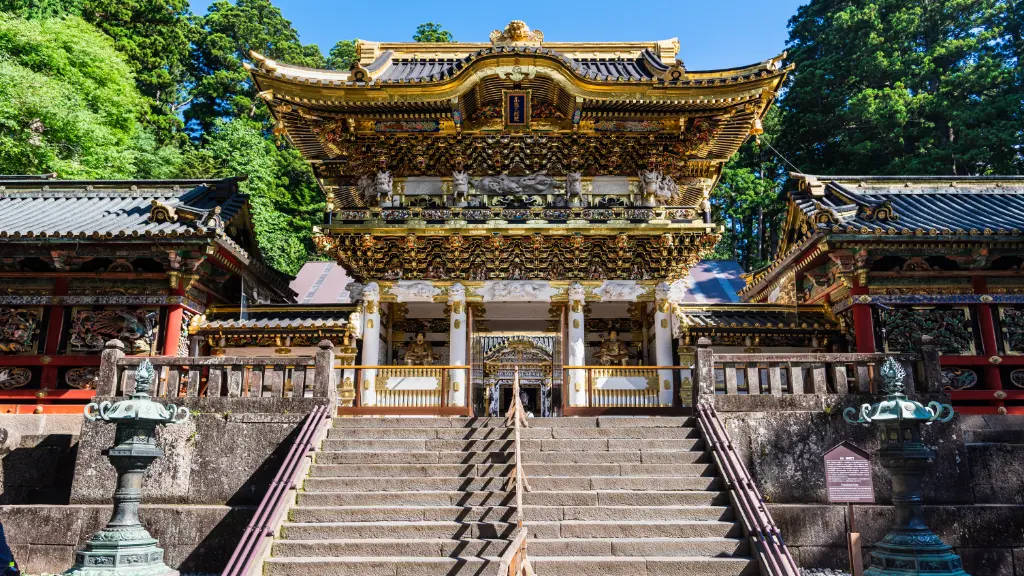
Nestled in the mountains of Tochigi Prefecture, Nikko is one of Japan’s most significant historical and spiritual destinations. At its heart stands the Toshogu Shrine, a UNESCO World Heritage Site dedicated to Tokugawa Ieyasu, the founder of the Tokugawa Shogunate. The shrine is famous for its intricate wood carvings, gold leaf details, and the famous “Three Wise Monkeys.”
Beyond Toshogu, Nikko’s natural beauty shines. Lake Chuzenji, formed by volcanic activity, offers peaceful lakeside walks and boat rides. Just nearby, the majestic Kegon Falls plunges nearly 100 meters into a rocky gorge, especially beautiful with autumn leaves.
The winding Irohazaka Road leads to these scenic spots and provides breathtaking views of Nikko’s mountainous terrain. Visitors can also enjoy seasonal activities such as hiking in the spring and summer or snow-covered vistas in winter.
Mt. Bandai and Lake Inawashiro: Outdoor Adventures
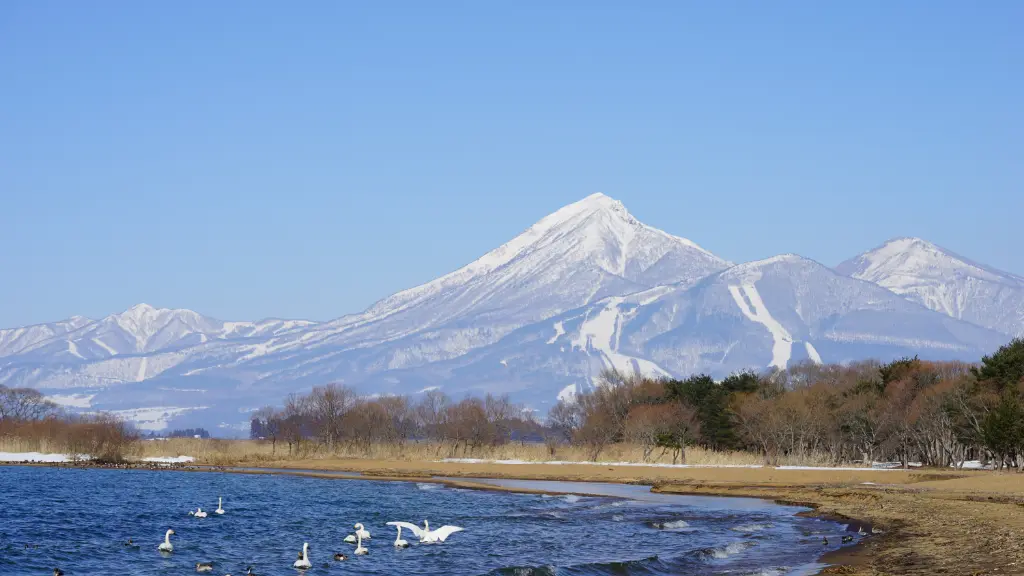
Towering in the center of Fukushima, Mount Bandai and the nearby Lake Inawashiro form one of Japan’s most underrated natural destinations. Mount Bandai, an active volcano, offers hiking trails of varying difficulty and panoramic views from the summit. The mountain changes character with each season—lush green in summer and a ski paradise in winter.
Lake Inawashiro, also known as the “Mirror of Heaven,” is Japan’s fourth-largest lake. Its calm surface reflects the mountain beautifully, especially in the early morning light. The lakeside area features cycling paths, campsites, and beaches for swimming in warmer months.
The surrounding region includes volcanic plateaus, marshlands, and nature parks like Goshikinuma (Five Colored Lakes)—a series of ponds whose waters change color depending on the minerals and light conditions. It’s an area rich in outdoor activities, photography spots, and refreshing nature escapes.
Hitachi Seaside Park: Colorful Landscapes
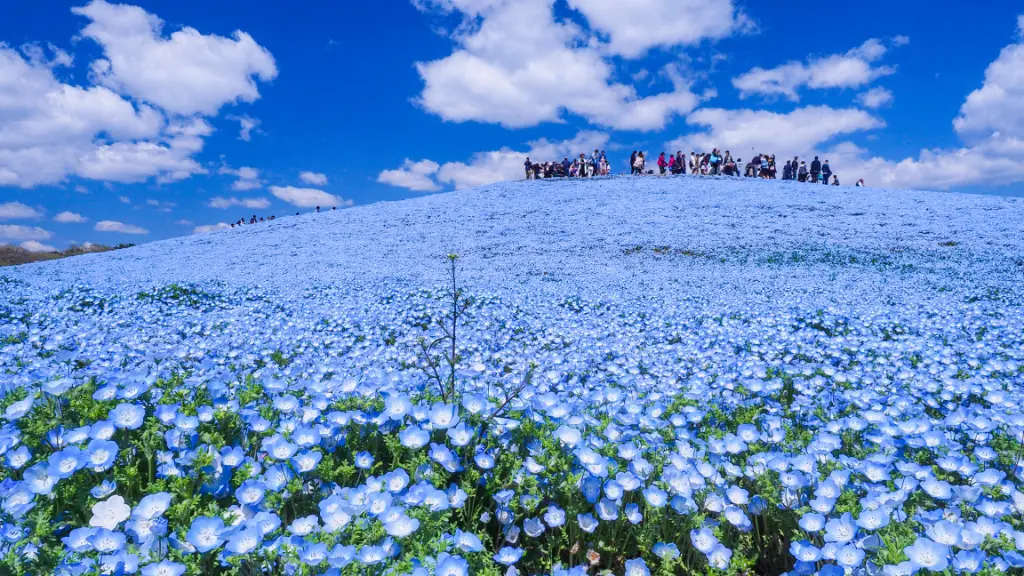
Located along the Pacific coast in Ibaraki Prefecture, Hitachi Seaside Park is a flower lover’s paradise. Spanning over 350 hectares, the park is known for its stunning seasonal flower displays. In spring, over 4.5 million nemophila (baby blue eyes) create an ocean of blue across the Miharashi Hill. In autumn, the same hills turn crimson with thousands of round kochia bushes.
Visitors can stroll or cycle through the park’s spacious grounds, stopping by various flower gardens, playgrounds, and open-air cafes. The park also hosts seasonal festivals, making each visit unique.
Only about two hours from Tokyo, this park is a perfect day trip for nature photography, family outings, or simply relaxing among vibrant seasonal landscapes. The nearby seaside town of Hitachinaka also offers fresh seafood and beautiful coastal scenery.
A Route Promoted Worldwide: Diamond Route Japan
Fukushima Prefecture’s “Diamond Route Japan” promotional video series has gained global recognition for showcasing the region through four themes: History, Outdoors, Health, and Nature. These themes highlight the diversity of experiences available across the route, from ancient temples and shrines to hot springs, scenic trails, and regional wellness retreats.
Final Thoughts: Discover Japan Beyond the Familiar
The Diamond Route offers a chance to see another side of Japan—one rich in heritage, natural beauty, and authenticity. It’s ideal for travelers who want to dive deeper into the country’s history, escape the crowds, and experience true Japanese hospitality.
With just a short journey from Tokyo, the Diamond Route lets you explore the heart of traditional Japan while still enjoying the comforts of modern travel. Whether you’re a culture enthusiast, nature lover, or adventure seeker, this route promises a truly unforgettable experience.
